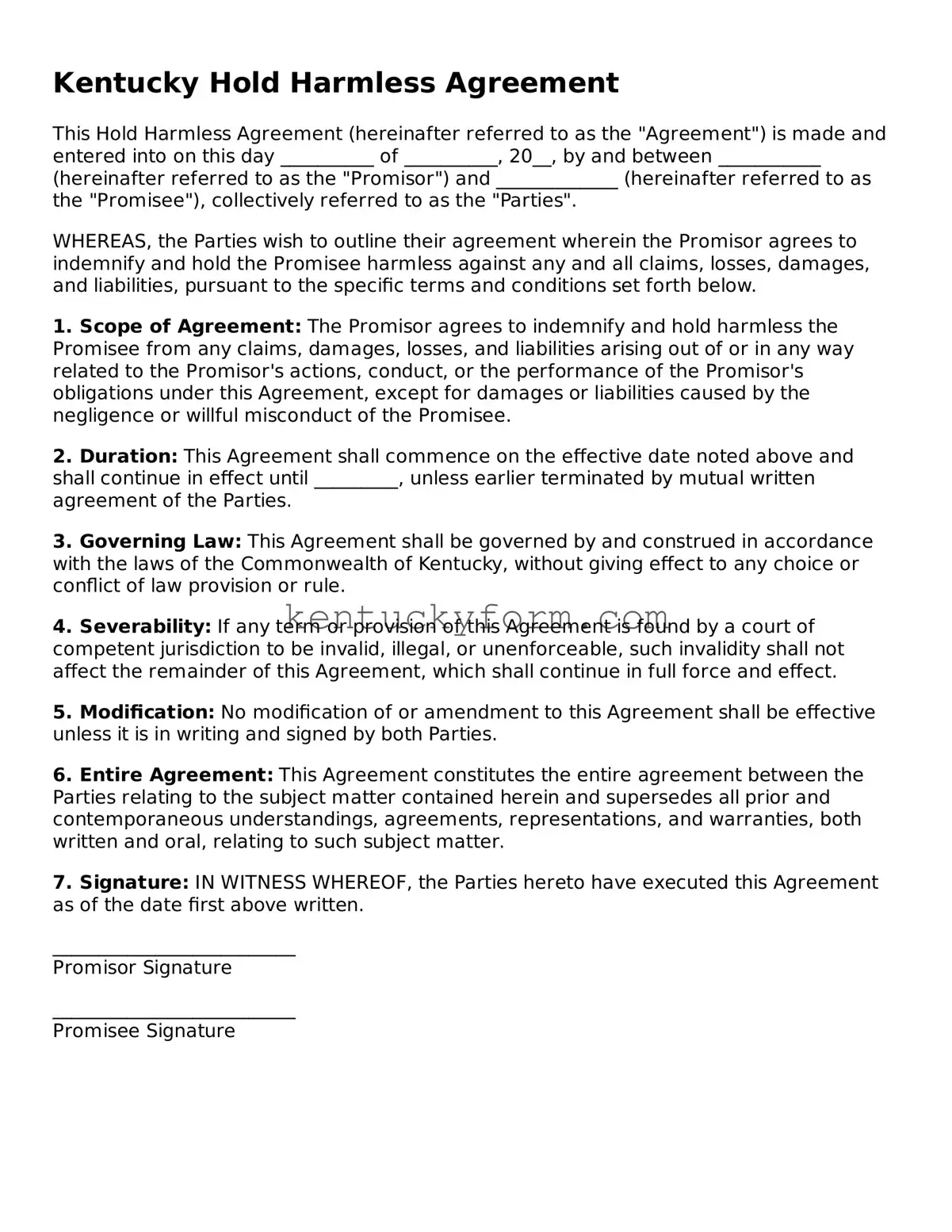Kentucky Hold Harmless Agreement
This Hold Harmless Agreement (hereinafter referred to as the "Agreement") is made and entered into on this day __________ of __________, 20__, by and between ___________ (hereinafter referred to as the "Promisor") and _____________ (hereinafter referred to as the "Promisee"), collectively referred to as the "Parties".
WHEREAS, the Parties wish to outline their agreement wherein the Promisor agrees to indemnify and hold the Promisee harmless against any and all claims, losses, damages, and liabilities, pursuant to the specific terms and conditions set forth below.
1. Scope of Agreement: The Promisor agrees to indemnify and hold harmless the Promisee from any claims, damages, losses, and liabilities arising out of or in any way related to the Promisor's actions, conduct, or the performance of the Promisor's obligations under this Agreement, except for damages or liabilities caused by the negligence or willful misconduct of the Promisee.
2. Duration: This Agreement shall commence on the effective date noted above and shall continue in effect until _________, unless earlier terminated by mutual written agreement of the Parties.
3. Governing Law: This Agreement shall be governed by and construed in accordance with the laws of the Commonwealth of Kentucky, without giving effect to any choice or conflict of law provision or rule.
4. Severability: If any term or provision of this Agreement is found by a court of competent jurisdiction to be invalid, illegal, or unenforceable, such invalidity shall not affect the remainder of this Agreement, which shall continue in full force and effect.
5. Modification: No modification of or amendment to this Agreement shall be effective unless it is in writing and signed by both Parties.
6. Entire Agreement: This Agreement constitutes the entire agreement between the Parties relating to the subject matter contained herein and supersedes all prior and contemporaneous understandings, agreements, representations, and warranties, both written and oral, relating to such subject matter.
7. Signature: IN WITNESS WHEREOF, the Parties hereto have executed this Agreement as of the date first above written.
__________________________
Promisor Signature
__________________________
Promisee Signature
